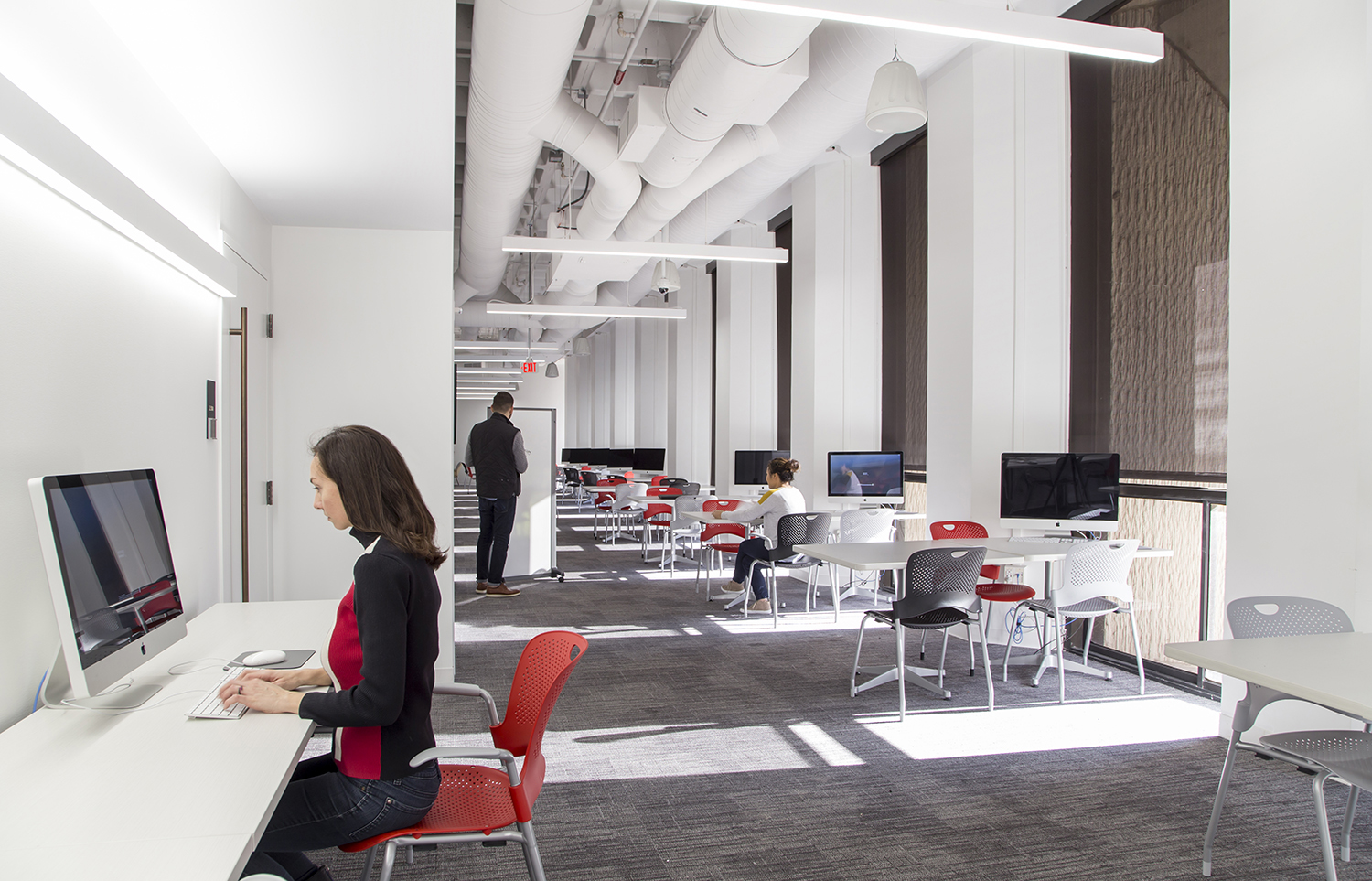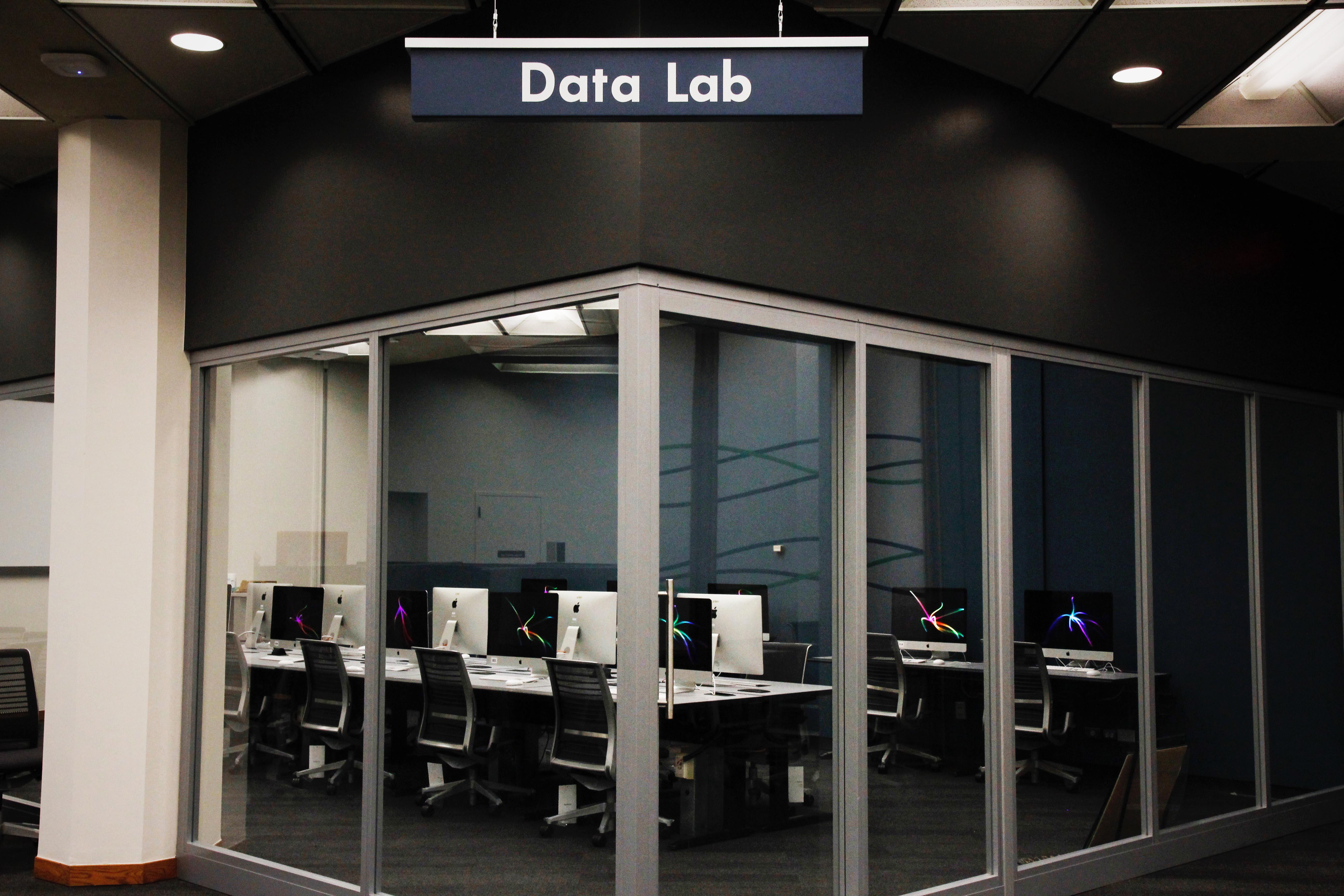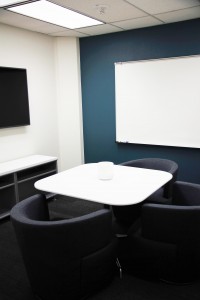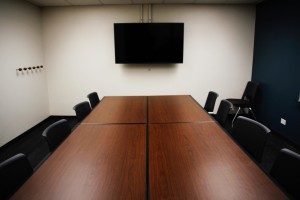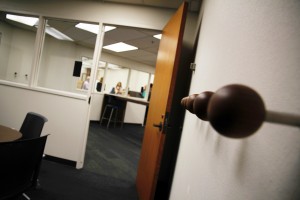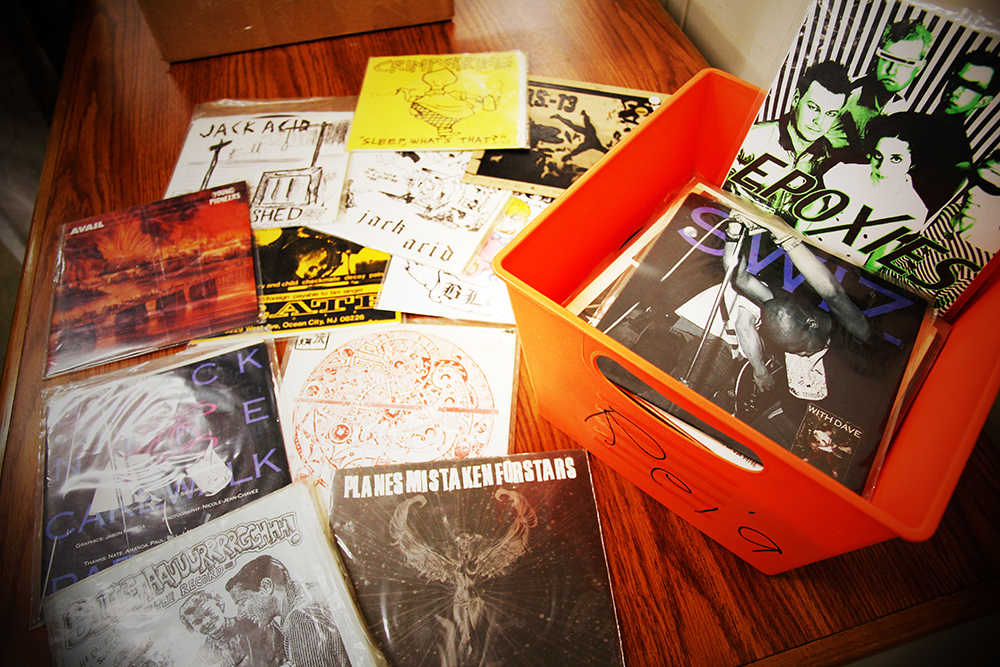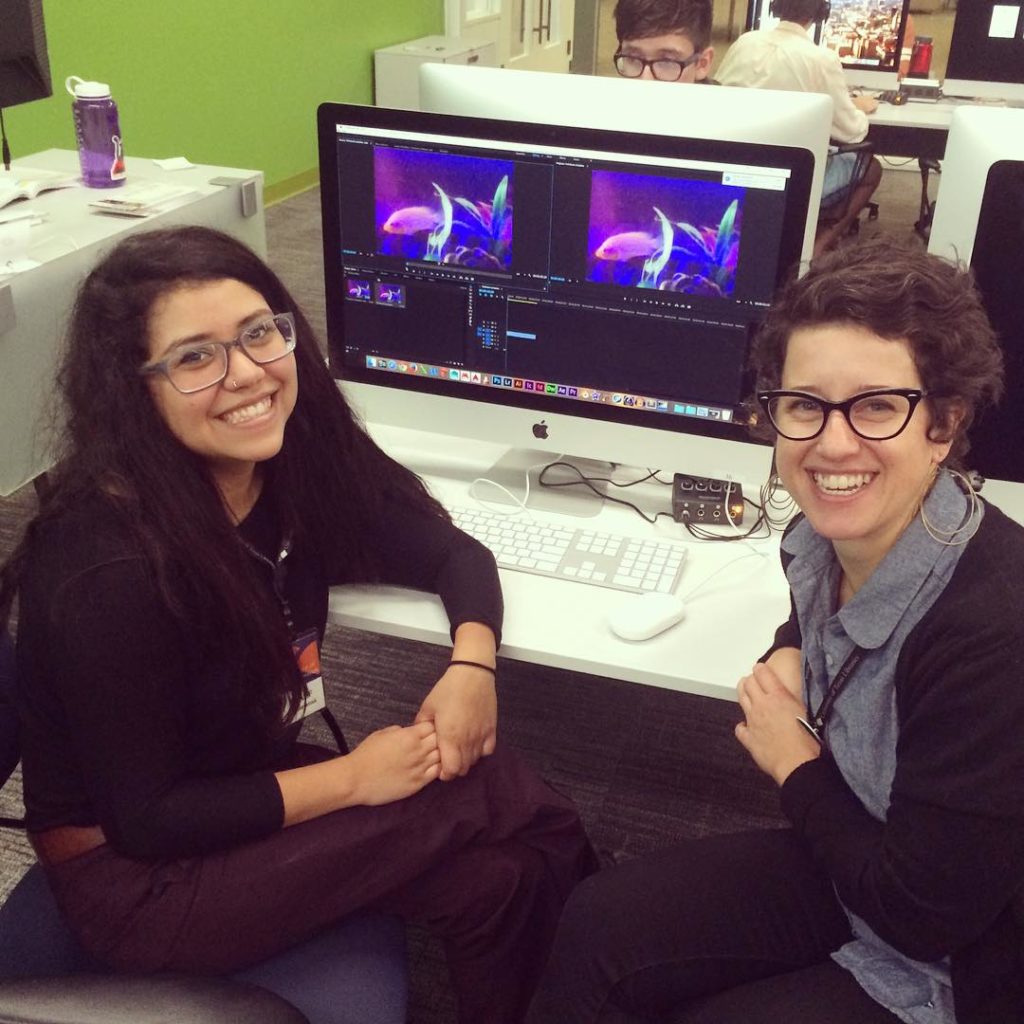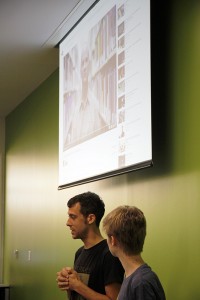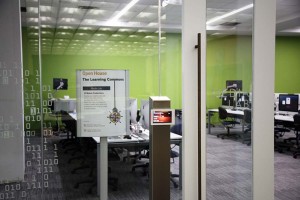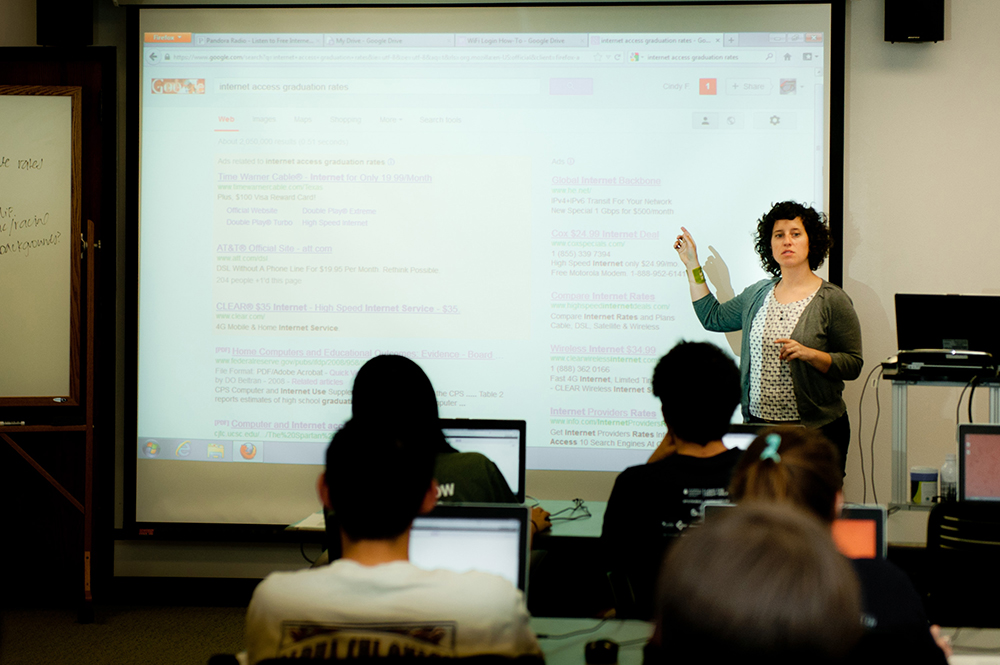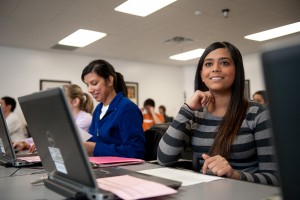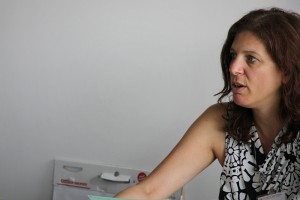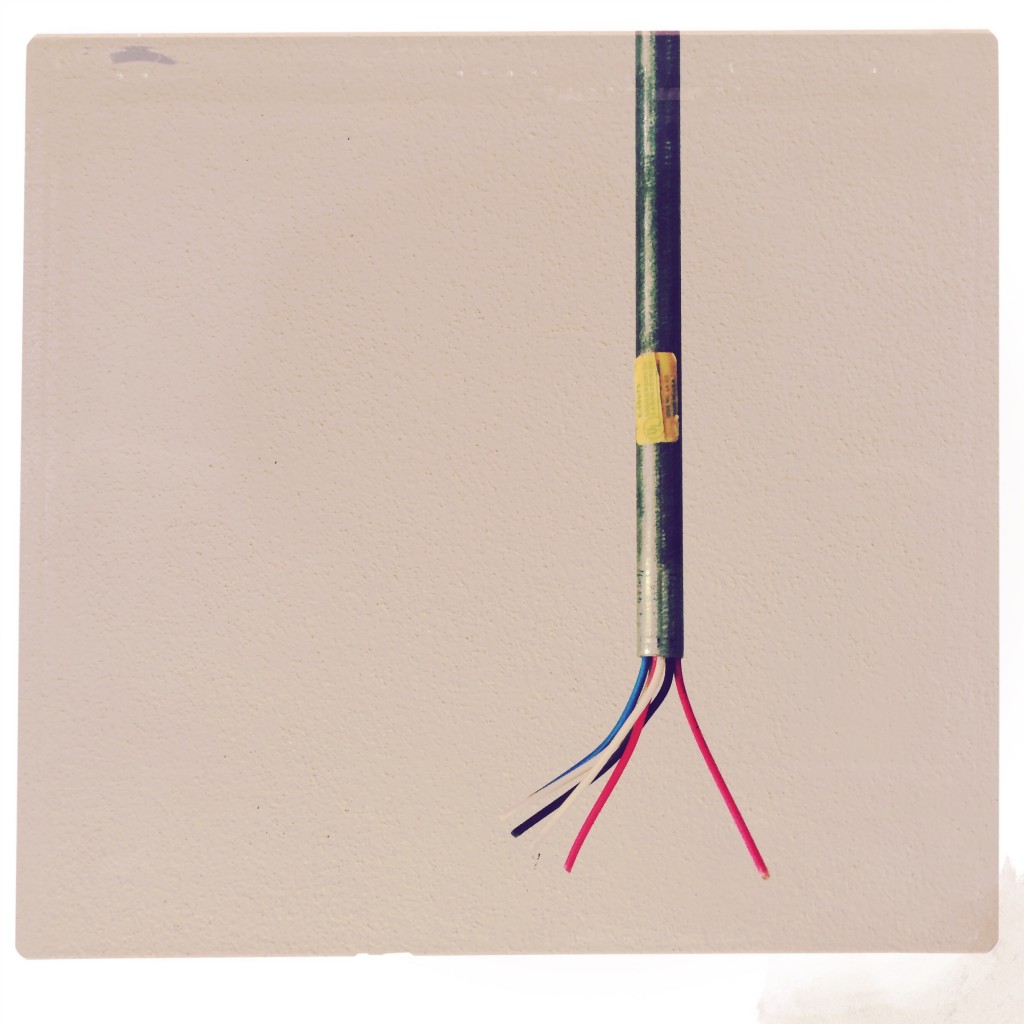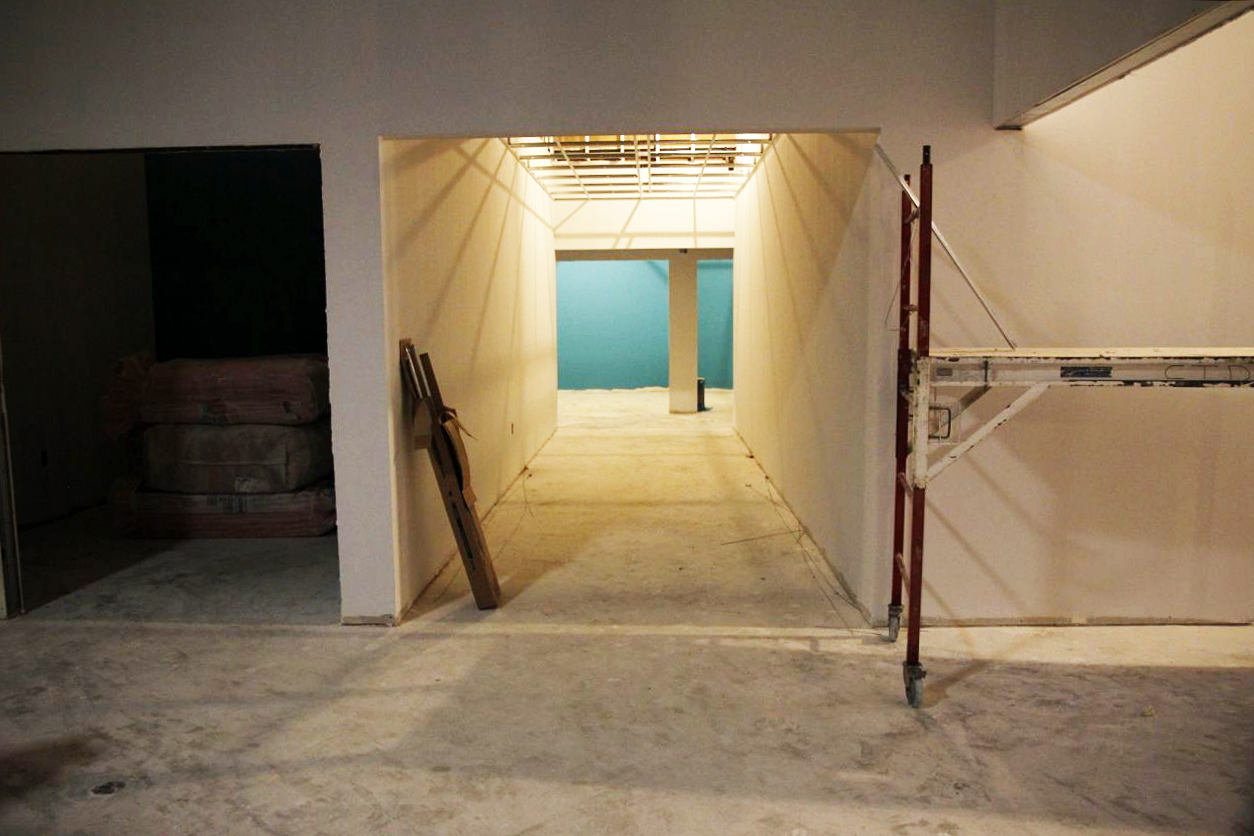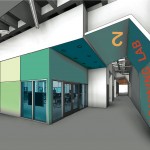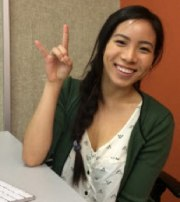
When the Libraries began investigating the possibility of having the University Writing Center (UWC) become the first campus partner to inhabit the new Learning Commons at the Perry-Castañeda Library, there were high hopes that the marriage would reap significant benefits for library users, patrons of the writing center and the larger campus community. One of the primary goals of the effort was to co-locate complementary services and resources in a central location in order to facilitate greater success in referrals from the Libraries to UWC, and vice versa.
So how has the partnership worked so far? We sat down with UWC program coordinator Alice Batt to get her perspective on the first half-year of life at PCL.
What does the landscape look like for UWC six months into life at PCL? Have you settled in?
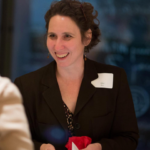
Alice Batt: Definitely. Right now there are 13 consultations happening outside my door—lots of energetic conversations! And our presentations team is making good use of the Learning Labs. About 10% of our writing presentations last semester were delivered in those labs. It’s great when that happens because, after the presentation, students can come right down to the UWC and make an appointment.
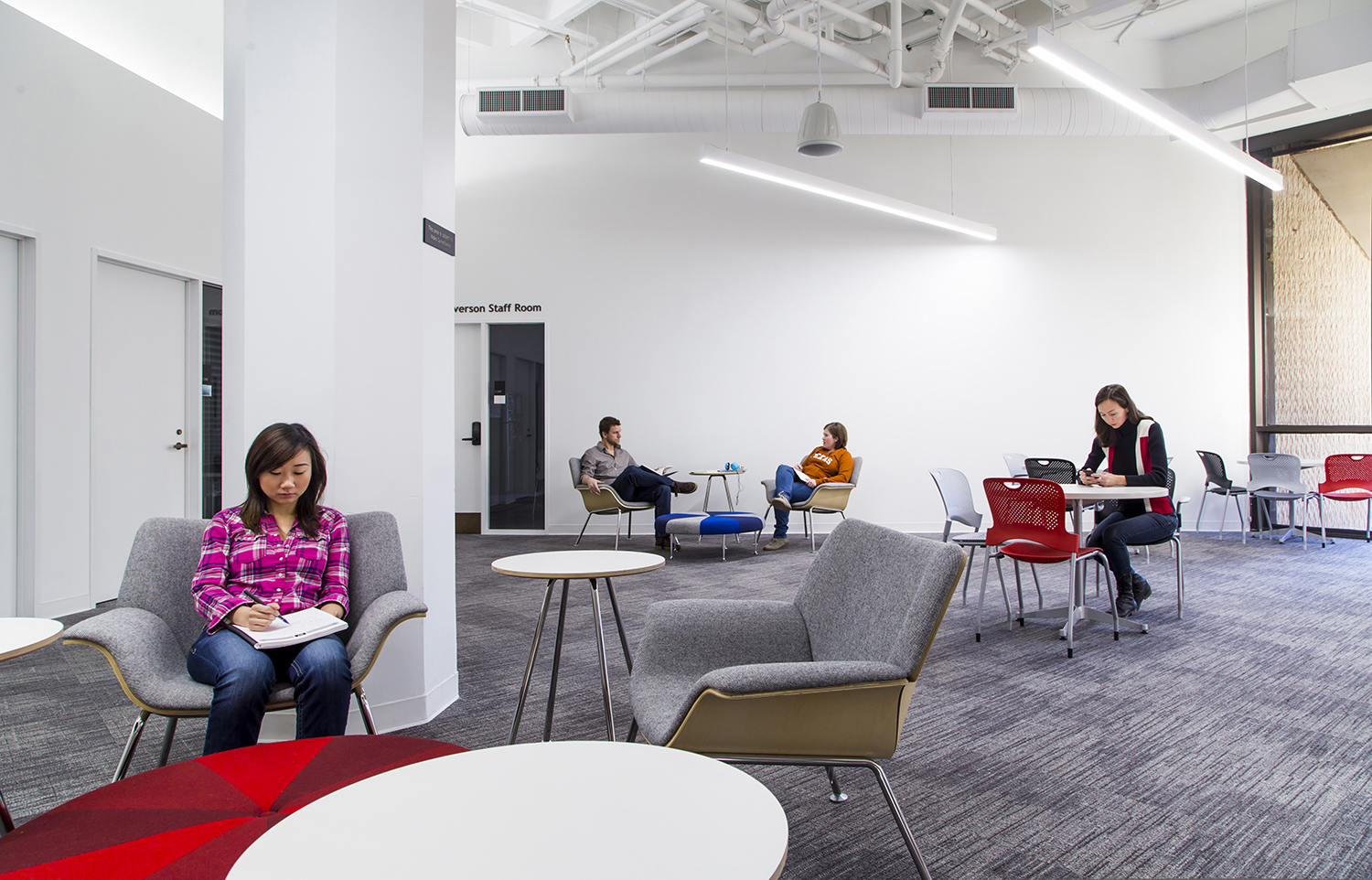
Any takeaways from what you’ve seen so far?
AB: One of the things that strikes me most is what it’s like to be central again, and to be in a library. Collaboration with our library partners is easier, we’re much more convenient for students, joint workshops are easier to plan and put on, and we’ve been able to experiment with programs like Long Night Against Procrastination. We’re seeing more students, and we’re more confident that, when we refer them to a librarian, they’ll actually go.
What’s the most unexpected outcome?
AB: It took us a while to get used to seeing people on the consulting floor when we arrive in the morning—some of them have been here all night! Now we just tap them gently and send them on their way to class, breakfast, or home.
How has the integration with relevant Libraries staff and services worked?
AB: Overall, it’s going beautifully. Trish (UWC Director Patricia Roberts-Miller) and I are part of the Learning Commons Steering Committee, which meets once a month to iron out wrinkles and make sure we’re all pursuing the same goals. Lately we’ve been talking about cross training: we had a well-attended workshop for our consultants conducted by two librarians that gave consultants some of the basics about the services, when to refer students to them, what sorts of resources are available. Since our consultants are students, it was helpful to them in both capacities–as students doing research, and as consultants working with students on researched writing.

Have you changed or adapted in some way you didn’t foresee?
AB: I haven’t checked the data to confirm this, but I get the sense we’re seeing a more diverse group of students coming to the UWC—more diverse ethnically, racially, linguistically, and also more diverse in their majors. We think it’s because this location is where students already are; they don’t have to make a special trip up to FAC.
What’s been the student response to the new space?
AB: Overwhelmingly positive. Everyone—our administrators, consulting staff, and the students we serve—loves working in a bright, cheery environment. And loads of students come here for private study after we close.
Are you considering any developments that you’d like people to know about?
AB: Our first semester working with grad students in College of Liberal Arts has been a big success. Grad students particularly like the 6-week writing groups; nothing improves productivity like being held responsible by a group! We’d like to expand our services to support graduate students throughout the university. Grad students who would like us to support their writing should tell their deans.
Any other thoughts?
AB: In the Learning Commons, we’re right in the path of students who need our services. We’ve always been a busy place, but now our numbers are up 4% from last year—and they’re rising!
